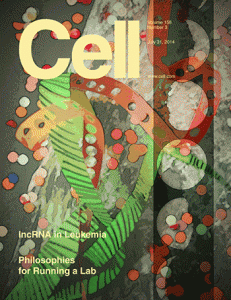In what is believed to be the largest genetic analysis of what triggers and propels progression of tumor growth in a common c hildhood blood cancer, researchers at NYU Langone Medical Center report that they have identified a possible new drug target for treating the disease. This time, the treatment doesn’t include chemotherapy.
hildhood blood cancer, researchers at NYU Langone Medical Center report that they have identified a possible new drug target for treating the disease. This time, the treatment doesn’t include chemotherapy.
T-cell acute lymphoblastic leukemia is one of the most common and aggressive childhood blood cancers. An estimated quarter of the 500 adolescents and young adults diagnosed with the cancer each year in the U.S. fail to achieve remission with standard chemotherapy drugs.
In a cover-story report that appeared in the journal Cell online on July 31, the NYU Langone team described how they used advanced genetic scanning techniques to identify 6,023 so-called long, non-coding strands of RNA, vital chemical cousins of DNA, that were active in the immune system T cells taken from 15 boys and girls with T-cell acute lymphoblastic leukemia, but not active in the healthy T cells in three young people without the disease.
Further analysis found that chemically blocking the action of one of those non-protein-producing RNAs, known as leukemia-induced non-coding activator RNA-1, or LUNAR1 for short, stalled leukemia progression.
Senior study investigator and NYU Langone cancer biologist Iannis Aifantis, PhD, says the study offers preliminary evidence that drugs blocking LUNAR1 could treat T-cell acute lymphoblastic leukemia and could be a long-sought alternative to chemotherapeutic drugs that kill both cancer and normal cells.
Aifantis, a professor and chair of pathology at the Laura and Isaac Perlmutter Cancer Center at NYU Langone, and an early career scientist at the Howard Hughes Medical Institute, also says LUNAR1 could aid in diagnosing the blood cancer.
“Our study shows that LUNAR1 is highly specific for T-cell acute lymphoblastic leukemia and plays a key role in how this cancer develops,” he says, pointing out that overproduction of LUNAR1 was recorded in almost all (90 percent) of leukemia patients tested.
Moreover, Aifantis says, his team’s latest findings suggest that development of future cancer therapies based on the underlying genetics of each patient should involve “not just mutations in someone’s DNA, but also alterations in the makeup of RNA.”
Aifantis says his team’s next steps are to develop more effective inhibitors of LUNAR1, preferably something that would precisely target any one or more of its 200-plus component nucleotides.
For more information, click here.
The above content was originally published and/or derived from: http://communications.med.nyu.edu/media-relations/news/drug-target-identified-common-childhood-blood-cancer

Comments are closed.